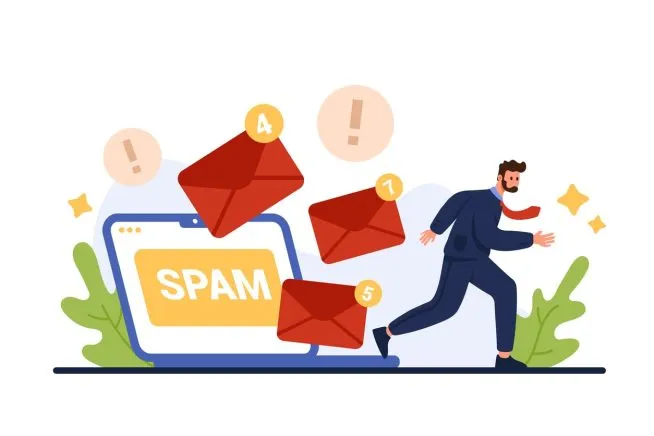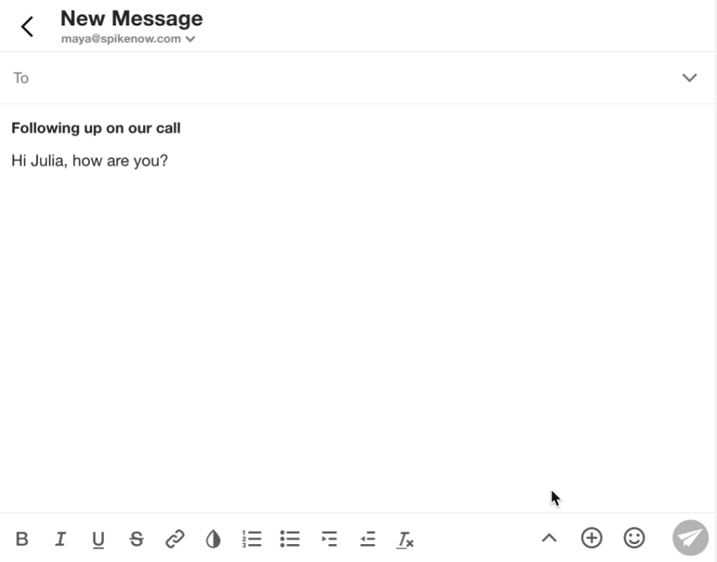From Overwhelmed to Organized: The Ultimate Guide to Email Management

Is your email inbox a digital dumping ground or a productivity powerhouse? For many, it’s the former. The average worker receives around 121 emails per day. That’s a tidal wave of messages crashing into your inbox daily.
This can quickly cause overwhelm, stress, missed deadlines, and project breakdowns. Studies show that 94% of employees struggle with email overload, leading to decreased productivity and heightened stress levels.
But why does this happen, and how can you take control? Email mismanagement is more than just a nuisance—it’s a significant barrier to workplace efficiency and well-being. It’s time to take back control.
In this guide, we’ll dive into the root causes of email mismanagement, explore the devastating consequences, and equip you with practical strategies to transform your inbox from a chaotic mess into a well-oiled machine.
Plus, we’ll introduce how innovative tools like Spike email can revolutionize the way you handle emails, making your inbox work for you rather than against you.
Get ready to reclaim control over your email and enhance your productivity.
The Root Causes & Consequences of Email Mismanagement
Email has become the default communication channel for most businesses, but its dominance has led to a perfect storm of mismanagement. Email mismanagement isn’t just a minor inconvenience; it’s a multifaceted issue that can disrupt both individual productivity and team efficiency.
Understanding the underlying causes and the toll it takes on your workflow and well-being is crucial for tackling the problem effectively.
Here we break down the primary causes of email mismanagement and the consequences it has on your work and mental health.
Causes of Email Mismanagement
Why has email become such a chaotic force in our lives? Several factors contribute to this epidemic.
Email has become the go-to communication tool for most workplaces, leading to an overwhelming volume of messages. The pressure to respond quickly and the expectation of constant availability contribute to inbox overload.
Outdated email systems and a lack of efficient processes further exacerbate the problem. The tools and processes used to manage email often fall short. Many organizations still rely on outdated email clients that lack essential organizational features.
Without efficient systems in place, employees struggle to keep their inboxes under control, leading to decreased productivity and frustration.
Here's a full breakdown of the root causes of email mismanagement
-
•
Lack of Clear Policies
Many companies fail to establish explicit email policies, leading to inconsistent practices and inefficiencies. Without folders, tags, or categories, locating important messages becomes a cumbersome task.
This disorganization not only makes it hard to find specific emails but also leads to a general feeling of confusion and inefficiency.
Clear guidelines on email usage, organization, and response times can significantly improve management.
-
•
Poor Email Etiquette
Inconsistent formatting, vague email subject lines, and lengthy, rambling messages contribute to email chaos. Without clear guidelines, email communication can quickly spiral into confusion.
When emails are not well-structured or threaded properly, it becomes challenging to track conversations and understand context, leading to further misunderstandings and confusion.
-
•
Lack of Training
Insufficient knowledge about email management tools and techniques can leave employees struggling to handle their inboxes effectively.
Without proper training or guidance, many individuals fail to utilize features that could streamline their email processes and improve overall efficiency.
-
•
Distraction and Interruptions
Frequent checking of emails can interrupt workflow and reduce productivity. The constant influx of notifications and the compulsion to respond immediately can lead to fragmented attention and hinder the ability to focus on more critical tasks.
-
•
Over-reliance on Email
From casual chats to critical project updates, email is often the go-to communication tool. Almost 330 billion emails are sent daily! This overuse dilutes its effectiveness and creates information overload.
-
•
Technological Limitations
Traditional email clients often lack features for effective organization and collaboration. The absence of tools for task management, file sharing, and real-time communication within the email platform exacerbates the problem.
The High Toll of Email Mismanagement

The true consequences of poor email management extend far beyond a cluttered inbox. These can include:
-
•
Information Overload
The sheer volume of emails can create information overload, making it difficult to find important messages. Valuable time is wasted searching for information that should be readily accessible.
-
•
Increased Stress & Burnout
The constant pressure to manage a flooded inbox can lead to increased stress and burnout. Employees become overwhelmed and less engaged in their work.
The psychological impacts of email mismanagement are substantial. The constant pressure to stay on top of emails and the overwhelming feeling of never being able to catch up can lead to anxiety, stress, and burnout.
Employees may experience diminished job satisfaction and a sense of being perpetually overwhelmed.
-
•
Negative Impact on Work-Life Balance
The expectation of constant email accessibility blurs the lines between work and personal life. Employees are tempted to check and respond to emails outside of regular work hours, leading to burnout and reduced well-being.
-
•
Workflow Issues
Email mismanagement can cause significant delays in project progress and result in missed deadlines. When emails are disorganized or not addressed promptly, it disrupts task delegation and can lead to bottlenecks in workflow.
This inefficiency can reduce overall productivity, as employees spend more time managing their inboxes than focusing on their core responsibilities.
-
•
Communication Breakdown
Poor email management often results in misunderstandings and errors. Disorganized or unclear email exchanges can lead to miscommunication, which can affect collaboration and decision-making.
This communication breakdown can create conflicts and hinder the overall effectiveness of team efforts.
10 Effective Email Management Strategies
Let’s explore practical strategies to help you regain control, boost productivity, and finally achieve inbox zen.
Time Management Techniques Batch Processing: Instead of checking emails constantly, dedicate specific time blocks for email management. This focused approach improves efficiency and reduces distractions. A study by RescueTime found that people who check email less frequently are significantly more productive. Scheduled Email Checks: Establish regular email check-in times throughout the day, such as in the morning, afternoon, and end of the day. This prevents constant interruptions and allows you to focus on other tasks. The Power of Snooze: Utilize the snooze or postpone feature to delay less urgent emails until a more convenient time. This helps prioritize immediate tasks and reduces inbox clutter. Organization and Prioritization Strategies Folder and Label Magic: Create a well-organized folder system to categorize emails effectively. Use clear and descriptive labels to easily locate messages when needed. Filter and Rule Mastery: Set up filters and rules to automatically sort incoming emails based on sender, subject, or keywords. This saves time and ensures important messages don’t get buried. Eisenhower Matrix: Prioritize emails using the Eisenhower Matrix, categorizing them as urgent and important, important but not urgent, urgent but not important, or neither urgent nor important. Focus on high-priority emails first. Communication and Collaboration Tips Reduce Email Dependency: Explore alternative communication channels like instant messaging or project management tools for less critical discussions. This can significantly reduce email volume. Clear and Concise Communication: Write clear, concise, and action-oriented emails to avoid misunderstandings and unnecessary back-and-forth. Set Expectations: Communicate your email availability and response times to manage expectations and reduce pressure.
10. Use Message Templates

If your email app supports message templates, you can create canned responses for frequently sent emails. If you work in customer service, you likely ask the same questions over and over again.
By sharing your templates with your team, everyone will see increased efficiency as they can copy and paste messages vs. retyping the same response over and over again.




